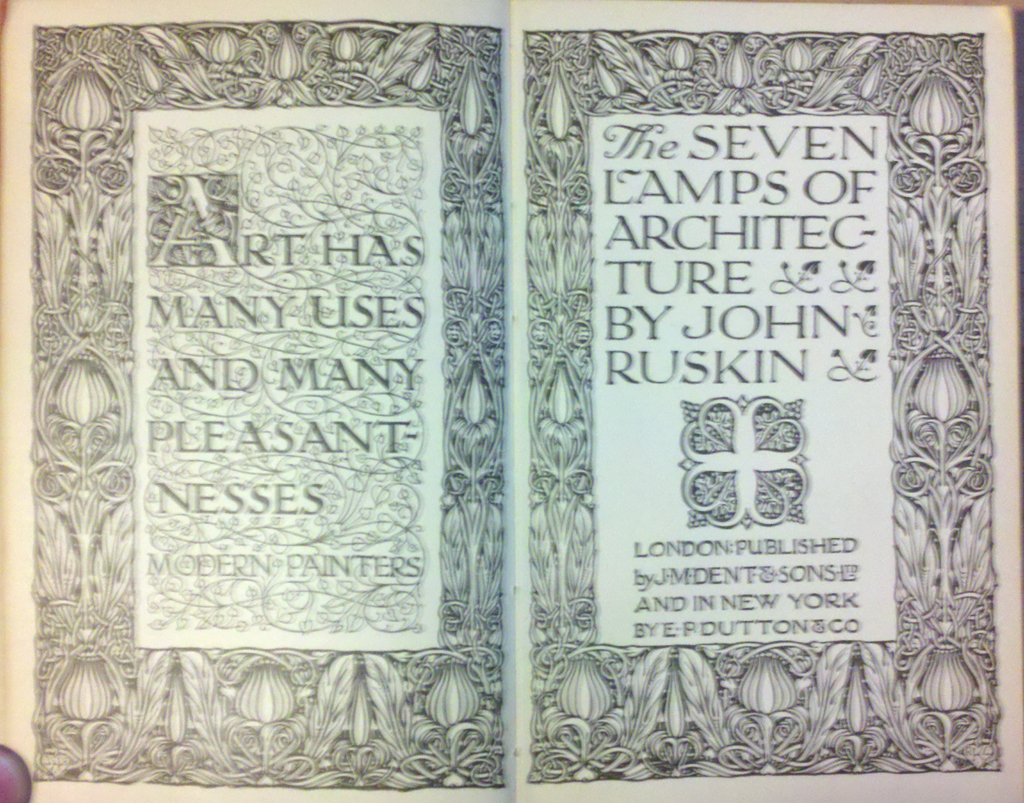

Ruskin_The Seven Lamps of Architecture.“Every era needs its landmarks.” A colleague at the New York City Landmarks Preservation Commission once told me this, while in conversation about Kevin Roche John Dinkeloo and Associates’ UN Plaza Hotel (constructed 1976-83 and designated a New York interior landmark in 2017). Ruskin_The Seven Lamps of Architecture.jpg Ruskin_The Seven Lamps of Architecture.html

Ruskin_The Seven Lamps of Architecture.txt Ruskin_The Seven Lamps of Architecture.pdf Obedience – no originality for its own sake, but conforming to the finest among existing English values, in particular expressed through the “English Early Decorated” Gothic as the safest choice of style. Memory – buildings should respect the culture from which they have developedħ. Life – buildings should be made by human hands, so that the joy of masons and stonecarvers is associated with the expressive freedom given themĦ. Beauty – aspiration towards God expressed in ornamentation drawn from nature, his creationĥ. Power – buildings should be thought of in terms of their massing and reach towards the sublimity of nature by the action of the human mind upon them and the organization of physical effort in constructing buildings.Ĥ. Truth to materials and honest display of construction were bywords since the serious Gothic Revival had distanced itself from the whimsical “Gothick” of the 18th century it had been often elaborated by Pugin and others.ģ. Truth – handcrafted and honest display of materials and structure. Sacrifice – dedication of man’s craft to God, as visible proofs of man’s love and obedienceĢ. The essay was published in book form in May 1849 and is structured with eight chapters an introduction and one chapter for each of the seven ‘Lamps’, which represent the demands that good architecture must meet, expressed as directions in which the association of ideas may take the observer:ġ.

Ruskin offered little new to the debate, but the book helped to capture and summarize the thoughts of the movement. Pugin and others had already advanced the ideas of the Revival and it was well under way in practice. To an extent, they codified some of the contemporary thinking behind the Gothic Revival. The ‘lamps’ of the title are Ruskin’s principles of architecture, which he later enlarged upon in the three-volume The Stones of Venice. The Seven Lamps of Architecture is an extended essay, first published in May 1849 and written by the English art critic and theorist John Ruskin.


 0 kommentar(er)
0 kommentar(er)
